🎸 G Major Chord – How to Play It on Guitar
The G major chord is one of the most popular chords in guitar playing and is often one of the first chords beginners learn. Known for its bright, happy, and full sound, G major shows up in countless songs across different genres, from pop and rock to worship and folk. If you’re just starting out, mastering this chord will unlock the ability to play hundreds of songs with ease.
🎯 Why Learn G Major?
The G major chord is a foundational open chord. It belongs to the family of “cowboy chords,” which are the simple open chords many songs are built on. Once you know G major, you’ll notice that it pairs naturally with chords like C, D, and Em, forming the backbone of many chord progressions.
Learning G major will also improve your hand strength and finger flexibility because it stretches across all six strings. At first, this might feel tricky, but with practice, it becomes one of the most comfortable shapes on the guitar.
👆 How to Play the G Major Chord Step by Step
- Place your ring finger on the 3rd fret of the low E string (6th string).
- Place your middle finger on the 2nd fret of the A string (5th string).
- Place your pinky finger on the 3rd fret of the high E string (1st string).
- Let the other strings (D, G, B) ring open.
- Strum all six strings together.
👉 Alternative version: Some players prefer to use their index finger on the 2nd fret of the A string and ring finger + middle finger on the 3rd fret of the E strings (low and high). Try both shapes and see which feels more natural.
💡 Tips for Beginners
- Arch your fingers so that you don’t accidentally mute the open strings.
- Press firmly but not too hard; buzzing sounds usually mean your fingers are not pressing close enough to the fret.
- Practice slow changes from G → C → D. This is one of the most common progressions in popular songs.
- If your hand feels stretched, try adjusting your thumb position at the back of the neck for more flexibility.
🚫 Common Mistakes to Avoid
- Muting the open strings by letting your fingers collapse.
- Using too much tension in your hand, which makes transitions harder.
- Strumming too forcefully — focus on clean tones, not volume.
🎶 Songs That Use G Major
The G major chord appears in hundreds of songs. Here are just a few well-known examples you can try:
Popular Songs
- Sweet Home Alabama – Lynyrd Skynyrd
- Brown Eyed Girl – Van Morrison
- Knockin’ on Heaven’s Door – Bob Dylan
Worship Songs
- How Great Is Our God – Chris Tomlin
- 10,000 Reasons (Bless the Lord) – Matt Redman
- Here I Am to Worship – Tim Hughes
Most of these songs use the simple chord family: G – C – D – Em – A – E, which makes them excellent practice material.
🔗 Related Chords
Once you’re comfortable with G major, the next logical steps are:
- G7 – Adds a bluesy sound.
- Gm (minor) – Darker, more emotional feel.
- Gmaj7 – Softer, jazzy flavor.
- C and D major – The perfect partners for G in many progressions.
❓ Frequently Asked Questions
Q: Can beginners play the G chord easily?
Yes! It may feel like a stretch at first, but with daily practice, it quickly becomes one of the most natural chords.
Q: What is the easiest version of G major?
A simplified version is to only play the top four strings (using your index on the 2nd fret of the A string and ring finger on the 3rd fret of the high E string).
Q: How long does it take to master the G chord?
Most beginners get comfortable within 1–2 weeks of consistent practice. Smooth transitions to other chords may take longer, but daily repetition will help.
📝 Practice Exercise
- Strum the G major chord four times slowly.
- Switch to C major, strum four times.
- Switch to D major, strum four times.
- Loop this progression (G → C → D) for two minutes.
This simple exercise trains your fingers to move between the most common chord shapes.
🙌 Final Thoughts
The G major chord is a must-know for every guitarist. It’s one of the most uplifting and versatile chords, appearing in countless songs across genres. By practicing G regularly, you’ll not only strengthen your fingers but also unlock the ability to play entire progressions that form the heart of modern music and worship songs.
So, take it slow, keep practicing, and soon enough, the G chord will feel like second nature. Once you’ve mastered it, explore related chords like C and D to expand your playing even further.
🎵 Remember: every great guitarist once struggled with their first chords — consistency is the key!
👉 Do you want me to go ahead and create a full “Chord Page Pack” (templates for C, D, A, E, Em, Am, Dm, F) so you have 8 starter chord lessons ready to publish? That would give your site a strong content base for AdSense.
The G major chord is one of the first chords beginner guitar players learn to play, and it’s really easy—you’ll just need three fingers.
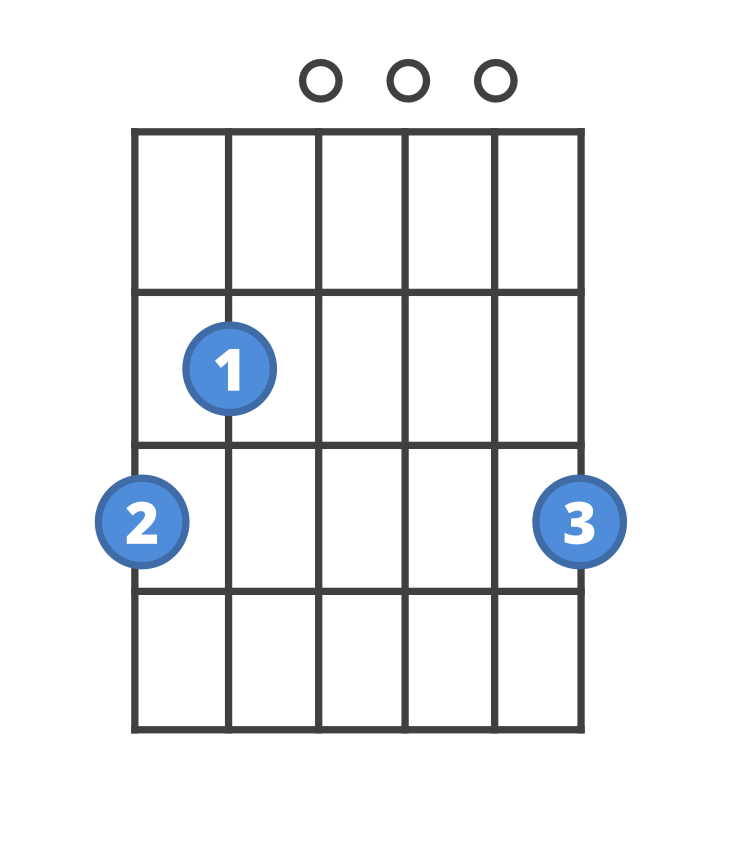
In the video below, we’ll teach you exactly where to put your fingers.
Step by Step
Step One
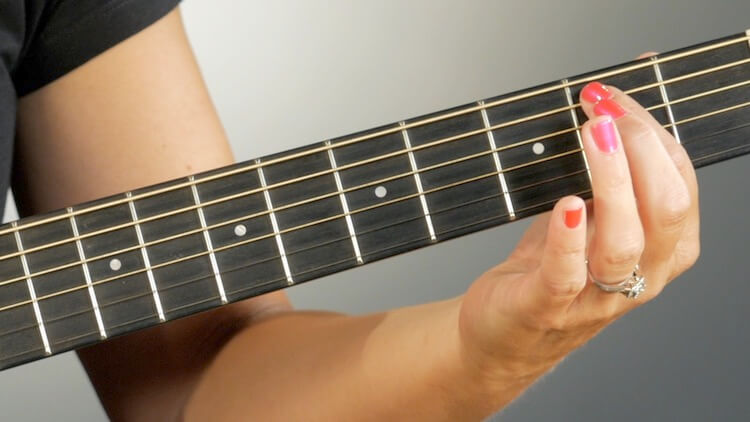
First, take your first finger on the second fret of the fifth string.
Remember: the order of the strings goes from the thinnest to the thickest.
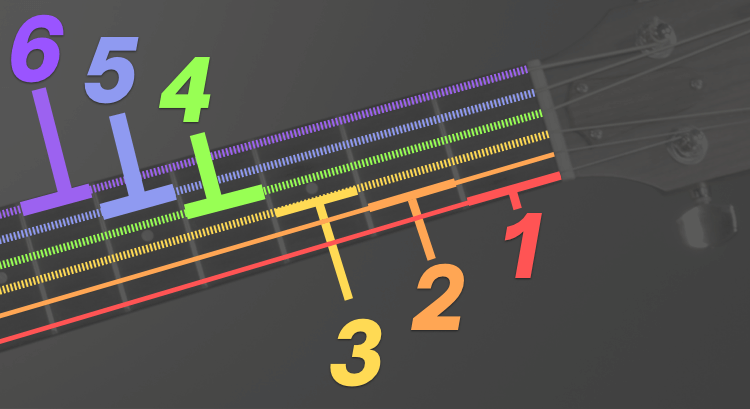
And when we say second fret, we don’t mean on the second fret itself.
No, we mean in the space just behind it, closer to the headstock of the guitar.
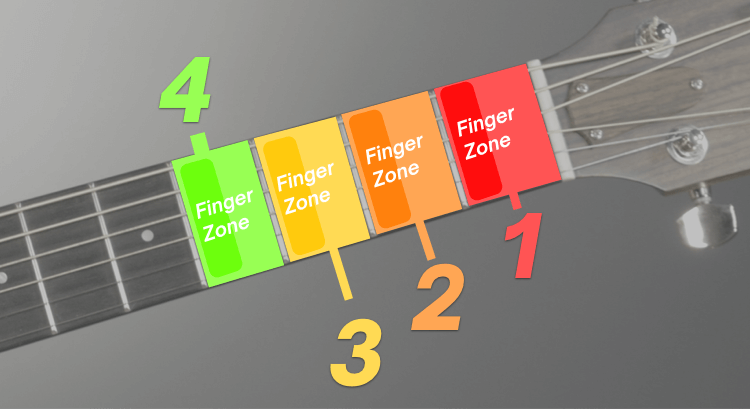
Using the two diagrams above, you’d be putting your first finger on the blue, fifth string in that orange finger zone of the second fret.
All set? Good! Let’s keep going!
Step Two
Put your second finger on the third fret of the sixth string.
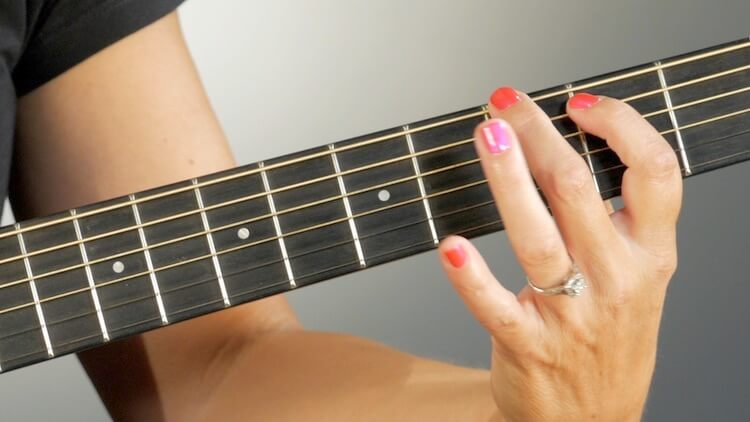
Step Three
Next, put your third finger on the third fret of the first string.
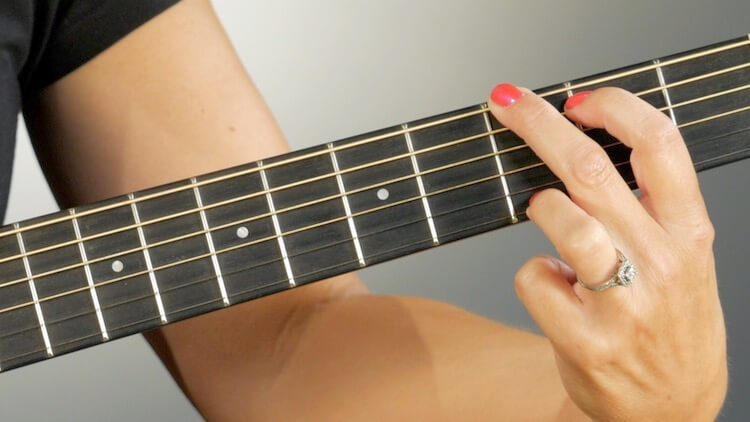
This can be a bit of a stretch–you’ve got your second finger on the sixth, thickest string, and then your third finger is all the way across the fretboard, on the first, thinnest string.
Step Four
Strum all six strings.
Does it sound good? Great!
Any buzzing? Totally normal. Read on for some tips to help you get a nice, clean sound.



